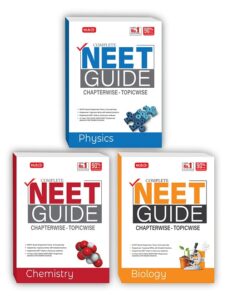
Many important questions are formed in competitive exams like NEET and boards from Class 11 Biology Chapter 5. The morphology of Flowering Plants deals with the study of the form and structure of plants. Below, we have provided Important Questions PDFs from Class 11 Biology Chapter 5 Morphology of Flowering Plants for your NEET 2023 preparation. You can check it here or download it later for revision purposes.
Latest: Electrostatics NEET Questions and Answers
Morphology of Flowering Plants Class 11 NEET Questions and Answers
We’ve compiled a list of important questions about the Morphology of Flowering Plants biology class 11 chapter 5 that you should not miss while studying for your NEET Exams.
Morphology of Flowering Plants MCQ for NEET
Q.1. Select the correct statement.
(a) Pneumatophores help to get oxygen for respiration.
(b) Adventitious roots of carrot and turnip get swollen to store food.
(c) The direct elongation of radicle leads to the formation of secondary roots.
(d) In maize, prop roots come out of the lower nodes of the stem.
A.1. (a)
Q.2. In opposite phyllotaxy, the number of leaves arising from each node is
(a) one (b) two (c) three (d) four.
A.2. (b)
Q.3. The position of ovary is said to be _______, in the flowers of guava and cucumber.
(a) superior (b) half-inferior
(c) inferior (d) half-superior
A.3. (c)
Q.4. A false septum or replum occurs between two parietal placentae in
(a) pea (b) rose (c) mustard (d) sunflower.
A.4. (c)
Q.5. Select the incorrect statement.
(a) Tap roots are commonly found in a dicots while in monocots fibrous roots are present.
(b) A leaf is a lateral outgrowth of stem developed endogenously at the node.
(c) A flower is a modified shoot meant for sexual reproduction.
(d) The most important vegetative organ for photosynthesis is leaf.
A.5. (b)
Q.6. The region of the root in which cells undergo rapid elongation and enlargement and are responsible for the growth of root in length is known as the
(a) region of maturation
(b) region of meristematic activity
(c) region of elongation
(d) root hairs
A.6. (c)
Preparing for NEET? Don’t forget to check –
The Living World NEET Questions and Answers
Biological Classification NEET Questions and Answers
Plant Kingdom NEET Questions and Answers
Animal Kingdom NEET Questions and Answers
Morphology of Flowering Plants Match the Following Questions for NEET
Q.1. Match the column I with column II.
| Column I | Column II |
|---|---|
| A. Parietal | (i) Citrus |
| B. Axile | (ii) Brassica |
| C. Basal | (iii) Pisum |
| D. Marginal | (iv) Helianthus |
A.1. A-(ii), B-(i), C-(iv), D-(iii)
Morphology of Flowering Plants Assertion and Reason Questions for NEET
In each of the following questions, a statement of Assertion (A) is given and a corresponding statement of Reason (R) is given just below it. Of the statements, pick the correct answer as :
Assertion : Phylloclades are found in plants of arid regions. Reason : Phylloclades are flattened green stems which have taken over the function of photosynthesis.
Assertion : Coconut is fibrous drupe with a fibrous mesocarp. Reason : Drupe is a fleshy fruit which develops from fused carpels and contain more than one seed.
Assertion : In monocots, the seeds are generally endospermous. Reason : The endosperm is surrounded by aleurone layer which is filled with aleurone grains which are proteinaceous in nature.
Assertion : Inflorescence is the arrangement of flowers on the floral axis. Reason : In racemose type of inflorescence flowers are borne laterally in an acropetal order
Assertion : Stamen is a fully developed male reproductive part of a flower. Reason : A sterile stamen is called staminode.
For More Assertion Reason Questions, Check out –
Morphology of Flowering Plants Figure-Based Questions for NEET
Q.1. Refer to the given figure showing different types of aestivation and answer the following questions
(a) Identify A, B and C.
A. A-Valvate aestivation, B-Imbricate aestivation, C-Vexillaryaestivation.
(b) Give one example of each A, B and C.
A. A is present in Calotropis, B is present in Cassia, C is present in Pisum.
(c) Among these, which type of aestivation shows papilionaceous corolla and also explain the arrangement of petals in it?
A. C represents vexillary aestivation or papilionaceous corolla. In Pisum (pea), there are five petals, the large (standard) overlaps the two lateral petals (wings) which in turn overlap the two smallest anterior petals (keel).
Best & Most Recommended Books for NEET UG 2023 Exam
|
NEET Champion
|
35 Years NEET Chapter-wise Solutions
|




































